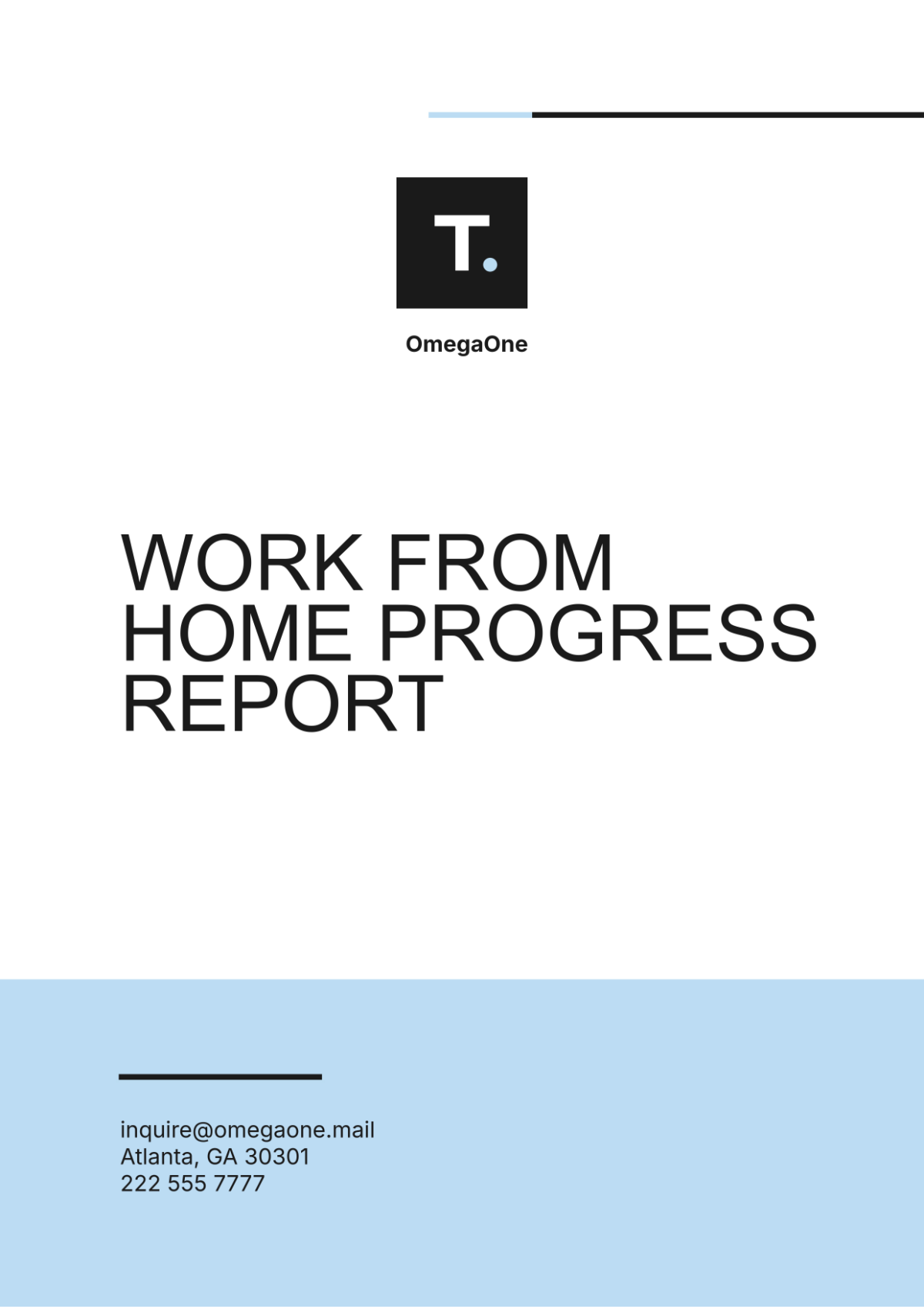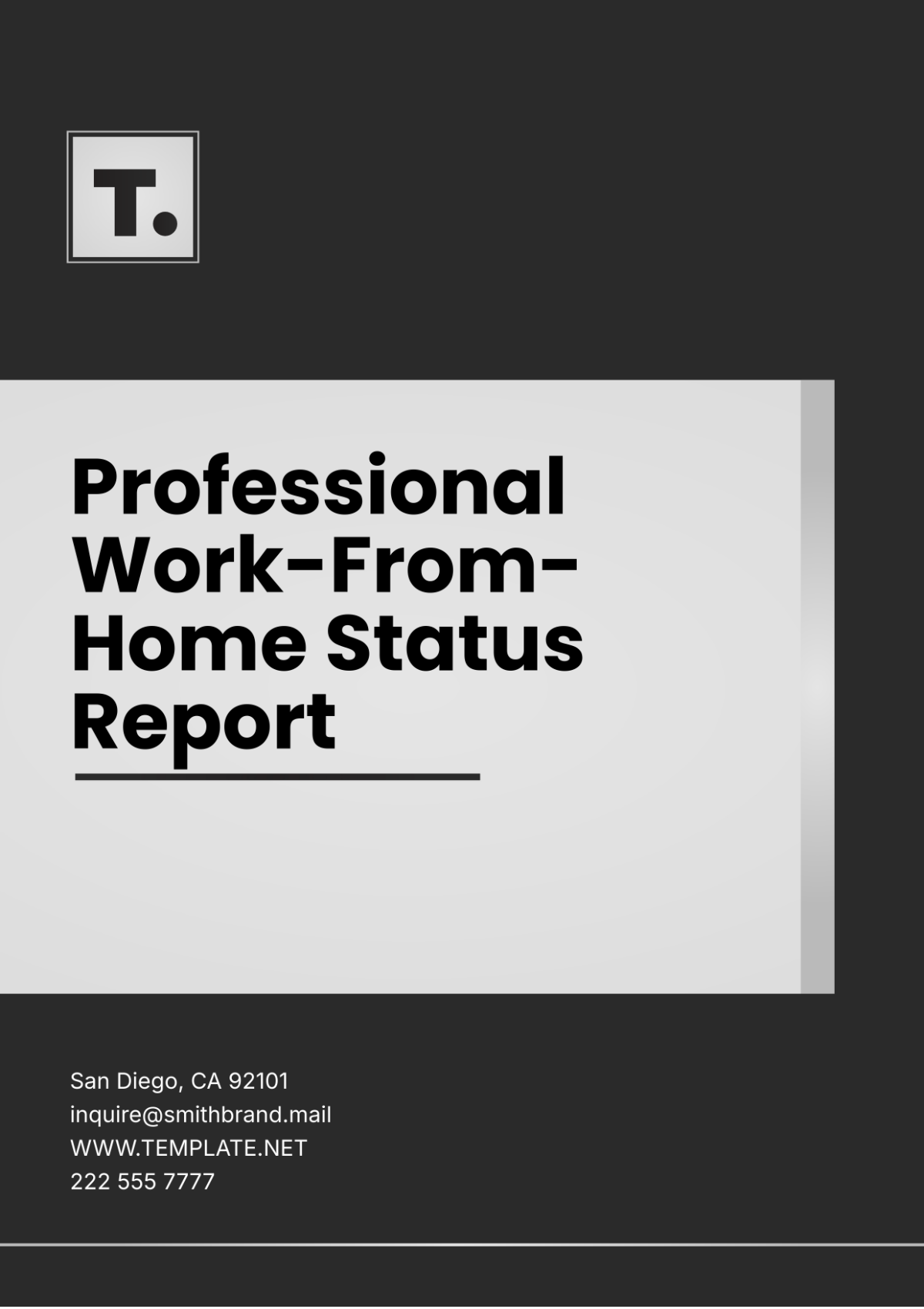Work From Home Productivity Report
I. Introduction
The rapid shift to a work-from-home (WFH) model, accelerated by the global pandemic, has transformed the way businesses operate. This report analyzes the productivity of employees in remote environments, assessing both the advantages and challenges of WFH and offering actionable recommendations for optimization.
II. Benefits of Working From Home
1. Increased Flexibility
One of the most significant advantages of remote work is the flexibility it affords employees. With greater control over their schedules, workers can balance professional and personal responsibilities more effectively, leading to enhanced job satisfaction and productivity. Key benefits include:
Customizable work hours: Employees can adjust their schedules to accommodate peak productivity periods or personal obligations.
Improved work-life balance: The ability to juggle work and personal life without strict office hours reduces stress.
Elimination of commuting: The removal of daily commutes saves time and reduces fatigue, which can be redirected toward work or leisure.
2. Enhanced Focus and Productivity
Remote work often provides a quieter, more controlled environment, allowing employees to concentrate better than in a traditional office setting. This can result in higher efficiency and quality of work. Benefits include:
Fewer interruptions: Without the distractions of in-office chatter or impromptu meetings, employees can maintain a higher level of concentration.
Customized workspaces: Workers can tailor their home environments to meet their comfort and productivity needs.
Controlled atmosphere: Employees have the freedom to create an optimal work environment, from adjusting lighting to selecting preferred background noise or silence.
III. Challenges of Working From Home
1. Communication Barriers
Effective communication is crucial to successful remote work, but it often poses challenges. Without face-to-face interactions, misunderstandings can occur, and collaboration may be hindered. Key issues include:
Delayed responses: Time lags in communication because of differing schedules or reliance on asynchronous tools.
Absence of non-verbal cues: Body language and facial expressions, which are essential for understanding tone and context, are often lost in virtual interactions.
Risk of miscommunication: Without immediate clarification, messages can be misinterpreted, leading to errors and reduced team cohesion.
2. Technology and Infrastructure
A solid technological foundation is critical for remote work success, but not all employees have access to the required resources. This disparity can create productivity gaps. Major challenges include:
Unstable internet connections: Slow or inconsistent internet can disrupt meetings, reduce output, and cause frustration.
Limited access to essential tools: Employees may lack the necessary software, hardware, or security measures to perform their duties effectively.
Difficulty obtaining IT support: Remote employees often struggle to resolve technical issues without immediate IT assistance, which can prolong downtime.
IV. Productivity Metrics
1. Task Completion Rates
Measuring task completion rates offers a concrete indicator of productivity in remote settings compared to traditional office environments. Data suggests that employees working from home show slight improvements in task efficiency, as shown below:
Metric | Office Work | Home Work |
|---|---|---|
Average Task Completion Rate | 78% | 82% |
Project Deadlines Met | 85% | 88% |
2. Employee Satisfaction
Employee satisfaction plays a pivotal role in productivity, as happier employees tend to perform better. Surveys reveal that remote work enhances satisfaction in key areas, including:
Job satisfaction: Increased autonomy and flexibility lead to higher morale.
Work-life balance: Employees report an improved balance between their professional and personal lives.
Reduced stress: The absence of commuting and the ability to control one’s work environment contribute to lower stress levels.
V. Recommendations
1. Enhancing Communication
To mitigate communication challenges, organizations should adopt strategies that foster clear and consistent interaction among remote teams. Recommendations include:
Regular virtual check-ins: Scheduled video calls help maintain team engagement and offer opportunities for real-time feedback.
Use of collaborative tools: Platforms like Slack, Microsoft Teams, or Trello streamline communication and project management.
Clear communication protocols: Establishing guidelines for response times and preferred communication methods can reduce delays and miscommunication.
2. Improving Technological Infrastructure
Ensuring that all employees have access to the necessary technological resources is essential for maintaining productivity in a WFH model. Suggested improvements include:
Provision of high-quality internet solutions: Companies should offer stipends or partnerships with internet providers to ensure stable connections.
Access to software and hardware: Employers should equip employees with necessary tools, including secure VPNs, laptops, and licensed software.
Robust IT support systems: A responsive remote IT helpdesk can quickly address technical issues, minimizing downtime.
VI. Conclusion
The work-from-home model offers numerous benefits, including increased flexibility, enhanced focus, and higher task completion rates. However, challenges related to communication and technology must be addressed to fully realize the potential of remote work. By investing in better communication strategies and technological infrastructure, companies can not only sustain but enhance productivity and employee satisfaction, making WFH a sustainable and effective long-term option.



















